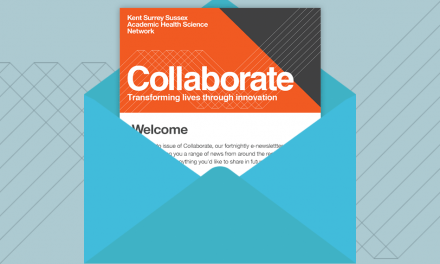To mark the new year we’ve created a series of blogs looking at what 2020 has in store for various elements of the region’s health and social care economy.
This week Guy Boersma, Managing Director of KSS AHSN, discusses why 2020 must see a tipping point for digital and AI solutions in health and social care.
I believe the 2020s must see a tipping point for digital and artificial intelligence (AI) solutions in health and social care. So, first, we’ll need 2020 itself to be a year of exploration, a year of discussion and a year of creation. And there’s some very good reasons why this is becoming ever more urgent.
Stats tell us that there are often as many as 90,000 clinical vacancies across the NHS in any 3 month period. The number of nursing vacancies in particular is proving difficult to reduce. And we know that it is in often areas with greater deprivation that there are fewer GPs per head of population. Not only are we struggling to recruit nationally, but it is often the most deprived areas where the gaps grow widest.
There’s two key things going on here. The challenge of recruiting and mobilising a workforce that can respond effectively to the increasing needs of an ageing population, and the inequalities in a system that fails to make itself accessible and available to everyone.
A radical approach
Both of these require some radical thinking and action in response. As ever, the radical brings its own set of issues and challenges, and, in that regard, AI is no different.
I, along with many people – citizens, patients, service users – am worried about how personal data will be used; staff are worried that AI will take their jobs; there’s concern among clinicians about their liability for decisions taken by algorithms.
Looking at this set of conditions, the urgency for AI exploration is clearer than ever. We need to up the pace at which we understand and address these concerns and respond to them. It’s not a question of “simply” testing and validating AI deployment in real world settings, but so getting a deep understanding where its deployment will help – and where it won’t.
Just the other week, the BBC was reporting on a study published in the Nature journal that AI “outperforms” doctors diagnosing breast cancer. It suggests that AI is getting as a good at diagnosis as current radiologist practice. That’s not a signal that AI is ready to plug and play in multiple situations and solve all our problems. What it means to me is that the development of AI so far is showing real promise – and that we owe it to citizens to find out more as quickly as possible.
Co-design
A good way of doing that, and the way which helps to both understand and address citizens’ concerns about AI and their data, is to involve them in the design of new solutions. The machine learning Technology Integrated Health Management (TIHM) for Dementia project led by Surrey and Borders Partnership NHS FT, based at the University of Surrey’s 5G Centre, has shown this really well.
Their approach to co-design has seen them work with what’s termed a “trusted user group”. This group has been central to understanding and addressing issues which could otherwise slow down or prevent use of the technology, or allow its use in ways which don’t bring the best benefits.
Of course it’s not just citizens who need to be up for it. Last year’s Topol report made recommendations about the training needed to develop a digitally enabled workforce, and how this needs action from the frontline right through to the board room. We need to look at the curriculum changes needed so that digital and AI is embedded right from the start in the minds of tomorrow’s clinicians. They will be helping all of us look after the ageing population and our responsibility to them must be equipping them with the tools they’ll need and a mindset that welcomes the additional capabilities technology brings.
The importance of spread and adoption
We need to act now to ensure faster development, testing and uptake of effective AI solutions. Where the research is promising, we must speed up validation in people’s homes and other care settings. If it proves its worth, then we can move quickly to ensuring it is spread and adopted.
When focused on spreading well-evidenced, beneficial and good value innovation the NHS can adopt fast. For instance, the Innovation and Technology Tariff (ITT) launched in 2017, aiming to incentivise the adoption and spread of innovative interventions in the health sector. Since then, the ITT and the subsequent Innovation and Technology Payment (ITP) programme have seen 194 sites across England adopt its products, reaching 405,014 patients.
Strength in numbers
The AHSN Network exists to help accelerate the spread and adoption of a wide range of proven innovation, including supporting programmes such as the ITT and ITP. In particular, AHSNs have a strength in connecting the right people to make things happen. Sometimes this is pulling together partners for a consortium bid. At other times it is matching solutions with health and social care localities who are keen to test, validate and feedback.
Doing all this on a greater scale will see us delivering on one of the Long Term Plan aims: to make England the global leader in testing new technology and solutions. Which in turn means people in England being among the first to benefit from the latest solutions, and our workforce having the very best tools to help them deliver top class care.
Other blogs in this series:
-
- James Wood, CEO of Community Pharmacy Surrey and Sussex, on behalf of East Sussex, West Sussex and Surrey Local Pharmaceutical Committees
- Jo Congleton, Clinical Lead, KSS AHSN Respiratory Programme and Consultant in Integrated Care SCFT/BSUH
- Rob Berry, Head of Innovation at Kent Surrey Sussex Academic Health Science Network
- Des Holden, Medical Director at KSS AHSN and Implementation Lead for the Applied Research Collaboration KSS





